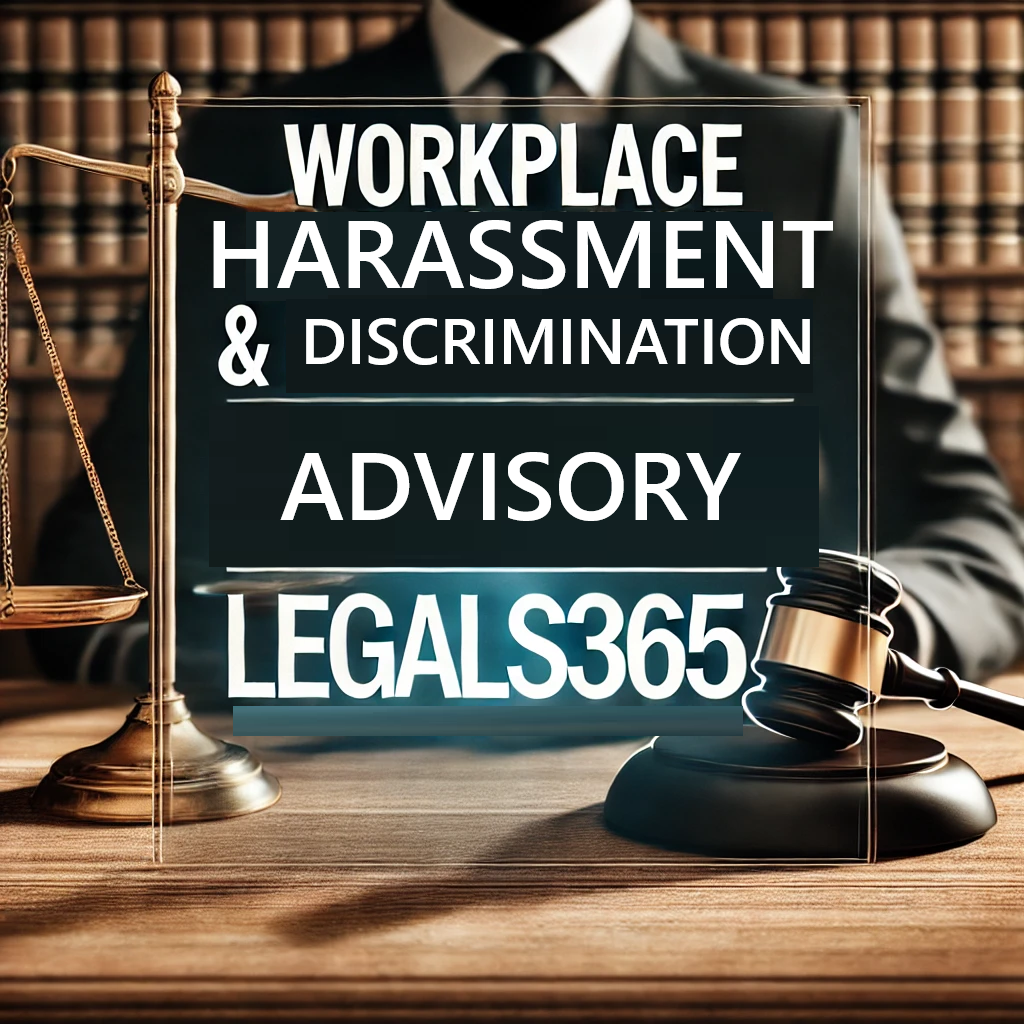
Workplace Harassment & Discrimination Advisory
Introduction
Workplace harassment and discrimination are critical issues that affect employees and organizations alike. With increasing awareness and legal regulations surrounding workplace safety and employee rights, businesses must take proactive steps to create a work environment free from discrimination and harassment. This guide provides a comprehensive overview of workplace harassment and discrimination, including legal aspects, employer responsibilities, employee rights, and how Legals365 can assist organizations and individuals in navigating these challenges effectively.
Understanding Workplace Harassment and Discrimination
What is Workplace Harassment?
Workplace harassment refers to unwelcome conduct that creates a hostile, intimidating, or offensive work environment. It can be verbal, physical, or visual and may include:
- Sexual harassment (unwelcome advances, inappropriate comments, or quid pro quo situations)
- Bullying and intimidation
- Racial or ethnic harassment
- Gender-based discrimination
- Retaliation for reporting misconduct
What Constitutes Workplace Discrimination?
Workplace discrimination occurs when an employee is treated unfairly based on protected characteristics, such as:
- Gender
- Race
- Age
- Disability
- Religion
- National origin
- Sexual orientation
Laws prohibit discrimination in various aspects of employment, including hiring, promotions, salary, benefits, and termination.
Legal Framework Protecting Employees
Key Employment Laws Against Harassment & Discrimination
- Title VII of the Civil Rights Act – Prohibits discrimination based on race, color, religion, sex, or national origin.
- Americans with Disabilities Act (ADA) – Protects employees with disabilities from workplace discrimination.
- Equal Pay Act – Ensures equal pay for equal work regardless of gender.
- Age Discrimination in Employment Act (ADEA) – Protects employees over 40 from age-related discrimination.
- Occupational Safety and Health Act (OSHA) – Ensures a safe and healthy workplace free from harassment.
Employer Responsibilities in Preventing Harassment and Discrimination
Employers are required to:
- Implement clear anti-harassment and anti-discrimination policies.
- Conduct regular training for employees and managers.
- Establish a transparent reporting mechanism.
- Investigate complaints promptly and take corrective action.
- Foster an inclusive and respectful workplace culture.
Steps Employees Can Take Against Harassment and Discrimination
Reporting the Issue
Employees who experience harassment or discrimination should:
- Document incidents with dates, times, and witness statements.
- Report the issue to HR or a designated compliance officer.
- Seek legal assistance if necessary.
Filing a Legal Complaint
If internal resolution fails, employees may file complaints with:
- Equal Employment Opportunity Commission (EEOC)
- State labor agencies
- Federal or state courts
How Legals365 Can Help
At Legals365, we specialize in providing expert legal advisory services for workplace harassment and discrimination cases. Our services include:
- Legal consultation for employees and employers
- HR policy development to ensure compliance
- Mediation and dispute resolution
- Litigation support for complex cases
Our team of experienced attorneys ensures that businesses and individuals receive the best legal protection and guidance.
Conclusion
Workplace harassment and discrimination are serious concerns that require proactive measures from both employers and employees. Understanding legal protections and taking appropriate action can help create a safer, more inclusive work environment. Legals365 and Online Noida stands ready to assist organizations and individuals in ensuring workplace fairness and compliance with the law.
Hashtags
#WorkplaceHarassment #EmploymentLaw #DiscriminationAdvisory #HRCompliance #EmployeeRights #LegalSupport #HarassmentPrevention #EqualEmployment #Legals365 #WorkplaceSafety #CorporateLaw #AntiDiscrimination #FairWorkplace #HRPolicy #LegalGuidance #OnlineNoida
